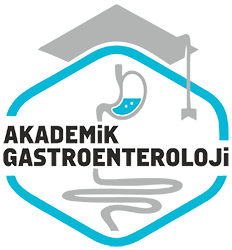Posthepatitik karaciğer sirozlu hastalarda osteoporoz ve kemik metabolizmasi
Osteoporosis and bone metabolism in patients with posthepatitic liver circhosis
Özet
Giriş ve amaç: Osteoporoz, özellikle alkolik ve kolestatik kronik karaciger Hastalarında uzun süreden beri tarif edilmektedir. Viral etiyolojili karaciger sirozunda osteoporoz ve kemik metabolizmasi ile ilgili çalışmalar yetersizdir. Bu çalışmada posthepatitik karaciger sirozlu hastalarda osteoporoz şiddeti ve sikligi ile hastalığın evresi ile korelasyonunu saptamayi amaçladık. Gereç ve yöntem: çalışmaya posthepatitik karaciger sirozu tanısı konulan 39 hasta (25 erkek, 14 kadın, ortalama yaş 52.3 ±11.2) ile ayni yaş grubunda 24 sağlıklı kontrol olgusu (14 erkek, 10 kadın, ortalama yaş 50.1±12.3) alındı. Hastalardan 12’si Child A, 13’ü Child B ve 14’ü Child C grubunda idi. Kemik mineral dansitesi dual enerji x-ray absorbsiyometrisi (DEXA) ile lomber vertebra ve femur boynunda ölçüldü. Kemik metabolizmasi ile ilgili biyokimyasal parametreler ve hormon düzeyleri arastirildi. Bulgular: Kemik mineral dansitesi lomber vertebrada karaciger sirozlu olgularda kontrol grubuna göre hem T hem de Z skoru açısından anlamli olarak düşüktü (sırasıyla, p=0.001, p=0.001). Femur boynunda ise yalnizca T skoru açısından anlamli düşüktü (p=0.046). Osteoporoz, lomber vertebrada T skoru açısından %28.2, Z skoru için ise %17.9 bulundu. hastalığın süresi ve Child evresi ile kemik mineral yogunlugu arasında ilişki yoktu. Albümin düzeyi ile lomber vertebra kemik mineral dansitesi, T skoru açısından ilişkili idi (p=0.09). Hastalarda osteokalsin ve parathormon düzeyi kontrol grubuna göre belirgin olarak düşüktü (sırasıyla p=0.001, p=0.027). Yine hastalarda idrar deoksipridinolin ve alkalen fosfataz düzeyi, kontrol grubuna göre belirgin olarak yüksekti (sırasıyla p=0.002, p<0.05). Sonuç: Viral etiyolojili karaciger sirozu osteoporozun önemli nedenlerinden birisidir. hastalığın süresi ve child evresi ile kemik mineral dansitesi arasi nda ilişki yoktu. Kronik karaciger hastalığında osteoporoz tedavisi yararli olabilir.
Abstract
Background/aim: Osteoporosis has long been recognized in chronic liver disease, especially cholestatic or alcoholic liver diseases. Nevertheless, little is known about osteoporosis and bone metabolism in viral cirrhosis. The aim of the present study was to investigate the prevalance and severity of osteoporosis in cirrhotic patients and the correlation of the clinical severity of cirrhosis. Materials and methods: We studied 39 posthepatitic cirrhotic patient, (25 males, 14 females, mean age: 52.3±11.2) diagnosed both clinically and histopathologically and 24 healthy control subjects, showing similar age and sex characteristics (14 males, 10 females, mean age 50.1±12.3). 12 patients were in Child A, 13 were in Child B and 14 were in Child C stage. Bone mineral density (BMD) was measured by dual x-ray absorbtiometry in the lumbar spine and femoral neck. Bone metabolism markers and hormone profiles were measured. Results: The lomber bone mineral density was significantly lower in patients with viral cirrhosis than in controls for T and Z score (p=0.001, p=0.001, respectively). The femur neck mineral density was significantly lower only for T score (p=0.046). Osteoporosis prevalance in lumbar spine was 28.2% for T score and 17.9% for Z score, in cases with liver cirrhosis. No association was found between duration of disease and child staging with BMD values. The level of albumin was correlated with BMD values. The level of albumin was correlated with the lumbar spine mineral density for T score (p=0.09). Serum levels of osteocalcin and parathyroid hormone were significantly lower in patients with cirrhosis than in controls (p=0.001, p=0.027, respectively). In patients, urine deoxpyridinoline and serum alkaline phosphatase were significantly higher than in control subjects, (p=0.002, p<0.05, respectively). Conclusion: Our findings show that viral cirrhosis is a major cause of osteoporosis in patients. Bone mineral density did not correlate with the duration and Child classification of the disease. Treatment of osteoporosis in viral cirrhosis may be useful.



